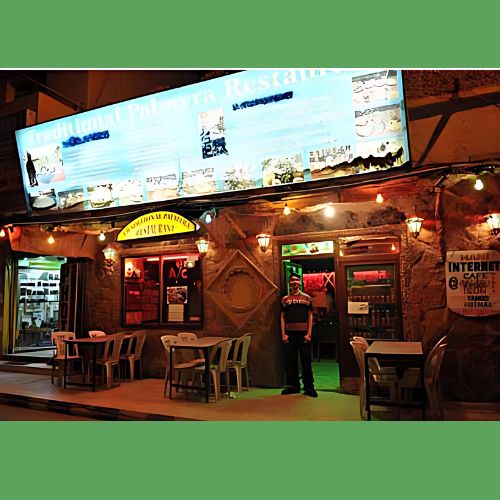

History is alive in Palmyra's ruins

Syria
It was a bright sunny morning in Palmyra as we headed out to explore the ancient city and its treasures. Our first stop was to see the Palmyra ruins, which cover about six square kilometres. We could feel ourselves being transported back in time to as we fixed our eyes on the Grand Colonnade, which was built by the Romans in the second century. It's a magnificent looking street, defined by its grand granite and limestone columns. Close to the street you can see Queen Zenobia's Baths. The tour led us on to the Temple Bel, which as its name suggests, was built for worshipping the god of Bel - you could still see the place where they use to sacrifice animals. In the 10th and 11th centuries the temple became a fortress for the crusaders. At different times it was also used as a church and then later as a mosque in the 12th century. Near the temple is a Roman style theatre which was used for plays and animal wrestling – it is still a remarkable place and if you close your eyes tight enough, you can imagine the cheers and roars from the crowd. During our walk along the Colonnade we ran into our camel herder friends from the night before. They were accompanied by boys and men selling postcards, Arabic headscarves and tablecloths. We all bought something to remind us of our time in the historic place. Our visit then continued to the Tombs of Elabel, which was built in 103 AD by its founder Elabel. It contains four floors and a basement which at full capacity could store about 300 bodies. Each tomb was sealed with a limestone slab and decorated with a figurehead of the dead person. Unfortunately, you can't see any of the bones or items from the tombs because they were either stolen or are now on show at the Palmyra National Museum. At the museum, our next stop, you can see some of the statues, coins, jewellery and other precious items that had been found among the ruins of Palmyra. Some of them are very well preserved and help to complete the story of Queen Zenobia, the Romans and the nobles of this ancient city. Later in the evening we headed to Citadel, a castle built by Fakhruddin in 1625. From the castle you can see amazing views of the ruins and if you are lucky, like we were, you might catch golden rays of light descend on the city as the sun sets for the day. After dinner in the hotel we took chai at the local internet coffee shop while we spoke with the owners about our tour and the purpose of our trip.